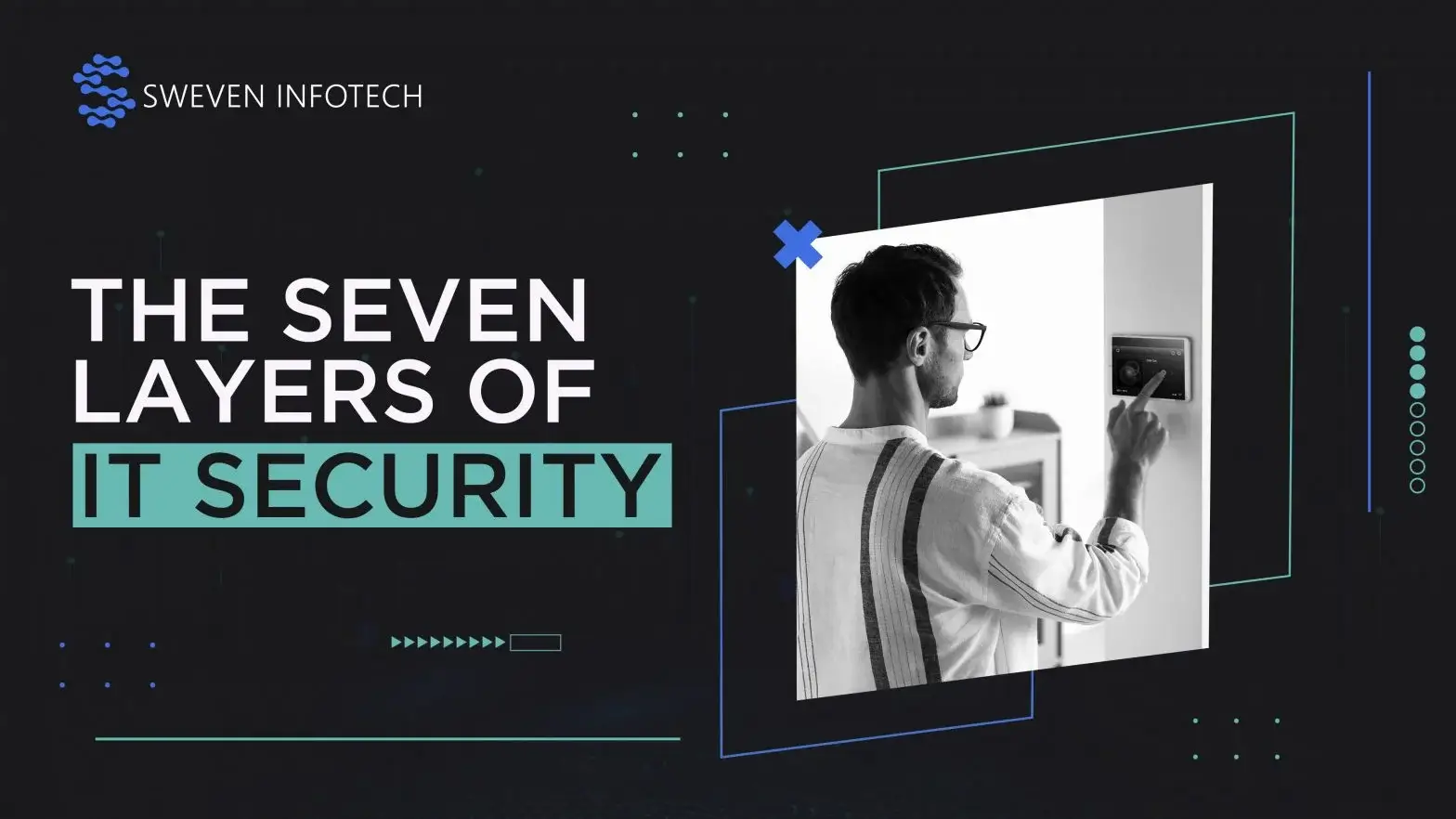
The Seven Layers of IT Security

For most people, it’s common to think that computer security is as simple as throwing a firewall and using some anti-virus software.
While this might be true for personal computers, business security is much more complex.
The idea of a single solution security system was never applicable to business networks.
There is not one but seven security layers when it comes to securing IT infrastructure.
The OSI Model
In the 1970s, the International Standards Organization (ISO) thought these needs to be a standard to protect your computer network systems.
They developed an ISO model to showcase how each layer is necessary and how everything is connected.
The Seven Layers of IT Security
When it comes to business IT security, it’s pretty clear that you need more than just a few protocols to secure your systems from a data breach.
Consider all possible loopholes and how a hacker might get into your system.
Let’s take a look at the seven layers of security defined.
1) Human Layer
It is the most vulnerable part of any IT security infrastructure. Most cyber-attacks we see today are a result of some form of human error. It’s not that people do it deliberately. They are just unequipped to handle the security concerns.
The best way to tackle this problem is to educate and train professionals on the basics of cybersecurity attacks. The instructions include how to spot phishing attacks, how to secure the system from their end, good password protocols, and recent cyber scams.
Having a structured access control is a good idea in case there is a successful attempt to breach.
2) Perimeter Layer
This is the outer layer of your computer network. It is where all devices connect. It includes both wireless connections and all devices connected to your network.
In earlier days the perimeter used to be safe. As there were only limited devices connected. But today we have computers, laptops, mobile phones, printers, even lightbulbs if you’re using IoT devices.
The first step here is to know where does your perimeter ends, and the devices are you connected with.
Next, you figure out what critical data is passing through these systems.
Third, you secure all these devices with firewalls, encryption systems, anti-virus, device management, etc.
3) Network Layer
Similar to the perimeter layer, the network layer also deals with the devices connected. But we are more focused on the activities one can do once they are in the system.
One of the best ways to achieve maximum security is to only give limited access to the network – access that is enough to do that regular job.
This way, if you face any attack, the damage is contained to that part of the network. It prevents the damage caused by human behavior as well as the impact caused by any external threats.
4) End Point Layer
An endpoint is any device connected to your network. The number of devices connected in one network can be overwhelming, and hence you need robust measures to ensure that every device in your network is secure in itself.
End-to-end encryption of every device is key in this layer. Mobile device management (MDM) is also a critical part of endpoint security. MDM allows you to restrict access to any device and manage all the devices remotely.
5) Application Layer
The application layers deal with the software and applications you use in the business. Microsoft Office, Zoom, Google Meet, Slack, and many other applications are necessary to carry out daily tasks. Hence they must be also be secured.
The easiest way to ensure you are secured is to update all the apps to the latest versions. Beyond that, there are special security measures taken to protect the integrated apps.
Sandboxes are used in browser-based applications to prevent any unauthorized users from entering the network.
6) Data Layer
Data is the first thing targeted in a cybercrime. This is the layer that requires most of the attention.
The type of data that you have depends on the business and can include payment information, customer information, social security information, and intellectual and patented property.
Losing this data erodes your customer’s trust and possibly the business license.
Keeping things tight at this layer includes encryption, regular data backups, authentication system, and data management policies.
8) Mission Critical Assets
This is anything your business can survive without. It could be software, hardware, electronic systems, financial records, and many more.
The things that are considered mission-critical change with each business. You need to decide what’s absolutely important to your business. The best thing is you can decide what’s critical based on the other six layers of security.
Conclusion
While each layer mentioned has the job of securing your business, the overall function of all the layers is to cover the possible loopholes.
Keeping track of all the layers requires effort, and you need a dedicated team to manage all the aspects.
Cyber attacks are a lot complex these days, and you need all these layers to keep your business secure at all times.
Far far away, behind the word mountains, far from the countries Vokalia and Consonantia, there live the blind texts. Separated they live in Bookmarksgrove right at the coast of the Semantics, a large language ocean.
A small river named Duden flows by their place and supplies it with the necessary regelialia. It is a paradisematic country, in which roasted parts of sentences fly into your mouth.

